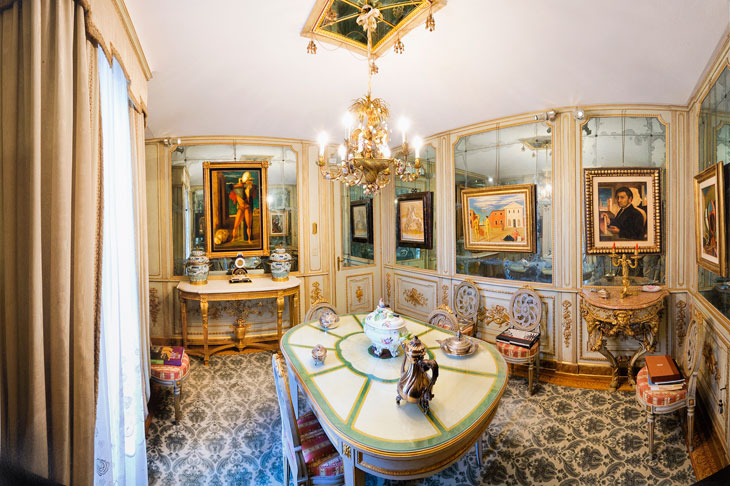Collecting can still be a mysterious pursuit. That is borne out by the example of Francesco Federico Cerruti, the Italian industrialist who, over the course of more than four decades, created a world elsewhere in an ordinary villa outside Turin, filling it with the hundreds of paintings, sculptures, and artworks that kept him quiet company on his weekly escapes there. Two years after Cerruti’s death, it has been announced that in line with his wishes the collection will soon be accessible to the public, managed by its institutional neighbour of so many years, Castello di Rivoli.
Cerruti was a private collector in the fullest possible sense, in that his collection was an individual obsession, which during his lifetime was shared with very few others. Although secrecy is not a trait much celebrated in collectors these days – the art world sometimes feels like one endless popularity contest – the notion of the hermetic collector, shut away with their art, continues to exert a strong cultural fascination.
For a start, it is astonishing to think about how such a collection was assembled – about the dedication, ambition and logistical achievement involved in creating something that appears fully formed at the point that it becomes widely known. This is a mystery of process; of trying to comprehend the evolution of a project that, to its author, must often have felt provisional, but after his death easily gives the impression of a holistic design. T.S. Eliot’s words about the literary canon in ‘Tradition and the Individual Talent’ (1919) resonate in the context of such a collection as we try to reconstruct its development: ‘The existing monuments form an ideal order among themselves, which is modified by the introduction of the new (the really new) work of art among them.’
Then there is the compulsion to speculate about the psychological motivations for collecting – the mystery of the collector’s mind, as it were. This is more intense in the case of an avid collector who did or does not speak publicly about their collection. Since the emergence of modern subjectivity in the 19th century, at least, we have been predisposed to equate privacy with types of mental disguise, and to project theories about the personalities of those who choose to remain hidden. In the context of collecting, the mystery is only enhanced by the realisation that, however much we conjecture, someone else’s mind is bound to remain largely inscrutable in relation to their taste for inanimate objects.
Those collectors who generously agree to be interviewed in Apollo are, by dint of speaking publicly to the magazine and its readers, far less mysterious than a figure such as Cerruti. They often speak openly about the process of collecting, and set out their conscious motivations for acquiring art, how they take decisions when doing so, and their aspirations for the future of their collection. As one former editor of the magazine maintains, the format of these interviews and the information they contain stands to make them a valuable resource for future scholars of the phenomenon of 21st-century collecting. But even here, I like to think, there remains a frisson of mystery: the pleasure of reading these profiles lies partly in trying to surmise how much any individual has chosen to reveal.
Less enigmatic, and most prominent in the field of contemporary art, are those collectors who increasingly choose to form their collections in public – whether through posting images of new acquisitions on Instagram or, more emphatically, by displaying their collections in private museums that are open to the public. With the latter, there is often a fascinating interplay between some degree of self-promotion and a genuine sympathy for that broader cultural mood in which collectors are expected to play their part in widening public access to art.
It is of course heartening that so many of today’s collectors do not think twice about putting their private possessions to work – as it were – and that ‘collector’ has in many contexts become a synonym for ‘patron’ or ‘philanthropist’. But I think it is reasonable to regret the gradual disenchantment of private collecting even while celebrating what this development has made possible. They don’t make collectors like Francesco Federico Cerruti any more. Or do they?
Editor’s letter from the September 2017 issue of Apollo, which includes a feature article on the Cerruti Collection. Preview and subscribe here.
